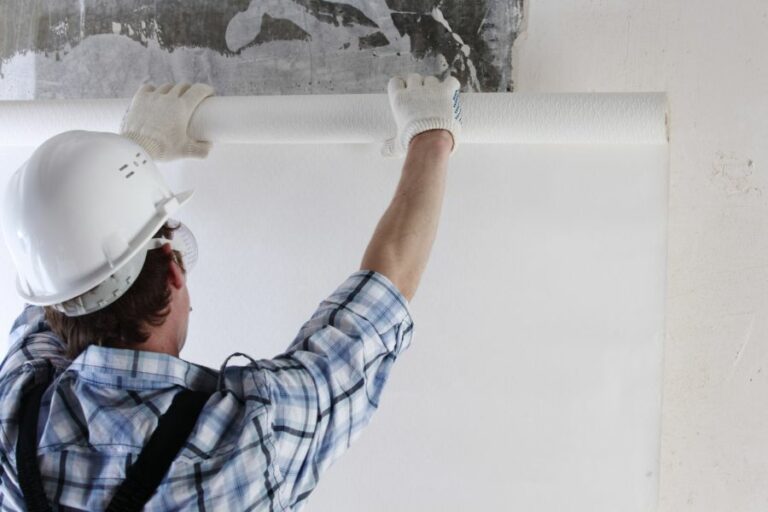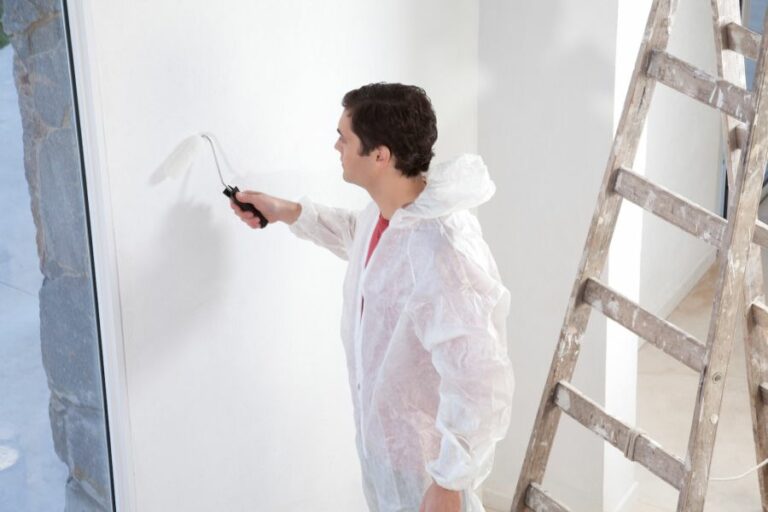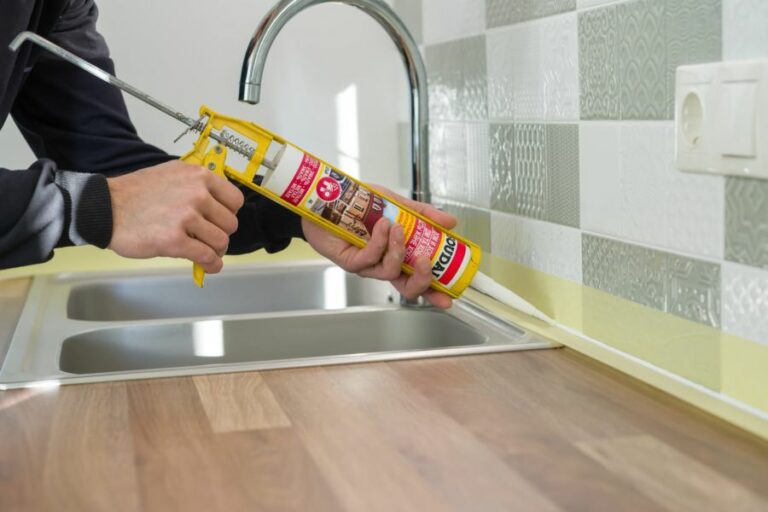Preparation For Unique Finishes/Effects. What Pros Say
As artists and craftsmen, we are always seeking new ways to create eye-catching and memorable finishes and effects that set our work apart. But achieving these unique results often requires careful preparation and attention to detail. Fear not! We’re here to guide you through the essential steps to ensure that your next project will shine with unparalleled creativity and distinction.
Preparation for unique finishes/effects:
To achieve unique finishes/effects, begin with material selection, considering wood, metal, and paint or stain options. Prepare the surface through sanding, priming, and sealing. Apply distinctive finishes using techniques like distressing, faux finishes, or layering and glazing. Protect the final effect with a suitable topcoat such as varnish, polyurethane, or wax.

Unleash your creativity with unique finishes and effects! Explore our expert tips and techniques to transform ordinary surfaces into eye-catching masterpieces. But wait, there’s more! Dive in and be amazed by the stunning possibilities read on and get inspired!
Contents
- 1 Preparing Surfaces for Distinctive Finishes/Effects
- 2 Techniques for Surface Preparation Before Finishing
- 3 Master the 6-Step Process for Surface Finishing Prep
- 4 Essential Pre-Application Steps for Wood Finishing
- 4.1 • Begin with the Right Wood Species
- 4.2 • Carefully Inspect the Wood Surface
- 4.3 • Properly Mill the Wood
- 4.4 • Sand the Wood Surface
- 4.5 • Clean the Wood Surface
- 4.6 • Raise the Grain (For Water-Based Finishes)
- 4.7 • Apply a Wood Conditioner (For Stained Finishes)
- 4.8 • Test the Finish
- 4.9 • Choose the Right Environment
- 5 Importance of Wood Preparation Prior to Finishing
Preparing Surfaces for Distinctive Finishes/Effects
When working on a project, it’s essential to strive for uniqueness in the finished product. To achieve unique finishes/effects, preparation is the key. Let’s explore various ways to prepare for unique finishes and effects, ensuring that your work not only stands out but also stands the test of time.
• Material Selection
The first step in preparing for unique finishes/effects is choosing the right materials for your project. Here are some factors to consider:
– Wood
Wood is a versatile material that can be transformed into various finishes/effects through staining, painting, and distressing. When selecting wood for your project, consider the following aspects:
- Grain pattern: The grain pattern will directly impact the appearance of your unique finish. Choose wood with an interesting grain pattern to add depth and character to your finished piece. For example, consider using cypress, teak, or walnut wood.
- Wood quality: Use high-quality wood, as it holds finishes better and is more durable. It’s also crucial to avoid wood with knots, as they can impact the finished product.
– Metal
Metal finishes like brass, bronze, and copper provide some fantastic unique effects. To achieve the best results:
- Clean the metal thoroughly before applying the desired finish. Any dirt or debris on the surface will compromise the final result.
- Protect your metal from scratches before applying the finish by using a soft cloth or rubber mat.
– Paint and Stain
Choosing the right paint or stain is crucial for achieving unique finishes/effects. Look for specialty paints or stains that provide the specific finish or effect you want.
These can include crackle finish, chalk paint, milk paint, or metallic paint. Quality is critical, so invest in high-quality products that will provide excellent results.
• Surface Preparation
To ensure a lasting and stunning finish, it’s essential to thoroughly prepare the surface of the material you’re working on. Here are some steps to follow:
– Sanding
Sanding the surface of your material is a must. This process not only smoothens the surface but also helps the paint or stain adhere better.
Use different grits of sandpaper, starting with coarse and gradually moving on to finer grits. Wipe the surface with a tack cloth to remove sanding dust after each grit change.
– Priming
Priming is particularly essential when painting wood or metal surfaces. A primer will create a consistent base for your unique finish and help prevent stains from bleeding through. Choose a primer based on the material you’re working on and the desired final finish.
– Sealing
Seal porous materials such as wood with the appropriate sealer to help achieve an even finish. For instance, using a wood conditioner on softwoods can prevent blotchy or uneven staining.
• Applying Unique Finishes/Effects
Once the surface is prepared, it’s time to create your unique finish. The following are some popular techniques:
– Distressing
Express age and character in your project by distressing the surface. There are numerous distressing methods to consider, such as:
- Sanding/abrasion: Remove paint/stain from edges or areas of natural wear using sandpaper or steel wool.
- Denting and gouging: Create dents and gouges with a hammer, screwdriver, or other tools.
– Faux Finishes
Faux finishes involve painting a surface to mimic the appearance of another material. Examples include rag rolling, sponging, marbling, and wood graining.
– Layering and Glazing
This technique involves applying multiple layers of paint or stain to create depth and visual interest. Start with a base color, apply additional colors using a variety of techniques, and finish by applying a glaze.
• Protecting Your Unique Finish/Effect
After completing the unique finishes/effects, it’s essential to protect them for long-lasting results. Apply a protective topcoat such as varnish, polyurethane, or wax, depending on the material and desired final appearance.
In conclusion, proper preparation and a keen eye for detail are the essential ingredients in achieving unique finishes and effects in your projects.
With the right materials, techniques, and dedication, you can create stunning results that elevate your work to a whole new level. Whether you’re a professional or DIY enthusiast, following these guidelines will ensure success in your quest for uniqueness.
Techniques for Surface Preparation Before Finishing
Finishing a surface, whether it’s wood, metal, or concrete, is a crucial step in any construction or renovation project. The finish significantly impacts the final appearance, durability, and maintenance of the surface. To achieve an impeccable result, proper surface preparation is vital.
• Surface Preparation for Wood
Wood is a versatile material with a warm and natural appeal. For a long-lasting and beautiful finish, thorough surface preparation is essential. Here are the necessary steps for wood surface preparation:
– Cleaning the Wood
First, remove any dirt, dust, or debris from the surface. A vacuum cleaner or an air compressor with a blowgun attachment can be helpful in this step. You may also use a tack cloth or a lint-free cloth dampened with mineral spirits to wipe the surface.
Recommendation: I recommend wearing a dust mask and safety goggles for protection during this step.
– Sanding
Sanding is crucial for a smooth and uniform finish. Start with coarse-grit sandpaper (around 80 to 100 grit) and work your way to the finer grit (about 220 grit). Sand in the direction of the wood grain to avoid visible scratches.
For flat surfaces, use a random-orbit sander or a palm sander. For curved or detailed areas, use a contoured sanding block or sand by hand.
Recommendation: I recommend using high-quality sandpaper from reputable brands to ensure consistent results.
– Repairing Defects
Fill any holes, cracks, or gouges with a suitable wood filler. After the filler has dried, sand the area smooth and flush with the surrounding wood.
– Final Cleaning
Before applying the finish, it is crucial to remove any sanding dust or debris. Use a vacuum cleaner, an air compressor, or a tack cloth for this step.
[Link]: For more information on wood surface preparation, visit the Forest Products Laboratory website, which provides detailed guides and advice.
• Surface Preparation for Metal
To ensure a durable, professional finish on a metal surface, proper preparation is essential. The following steps outline the process:
– Cleaning the Metal
Remove any dirt, grease, or oil from the surface. This step is essential for the adhesion of primers, paint, or other finishes. Commercial degreasers or solvents such as acetone, mineral spirits, or denatured alcohol can be used for this purpose.
Recommendation: I recommend wearing gloves, eye protection, and a respirator when working with solvents.
– Removing Rust, Scale, or Paint
For rusted or heavily corroded surfaces, remove the rust and loose scale using a wire brush, a scraper, or sandpaper. For larger surfaces or tougher jobs, you may use a grinder, a blasting method, or chemical rust removers.
If the metal is painted, and you need to remove the old paint, use a paint stripper or a sanding method.
– Sanding or Abrading the Metal
For a strong bond between the metal surface and the finish, lightly abrade the surface with fine-grit sandpaper (320 to 400 grit). This step will create a rough surface that helps the applied finish stick better.
• Surface Preparation for Concrete
To apply a finish or coating to a concrete surface, like epoxy or paint, proper preparation is crucial. The following steps will guide you through the process:
– Cleaning the Concrete
Remove any dirt, grease, oil, or other contaminants from the surface using a pressure washer or a commercial degreaser. This step is essential for the adhesion of the finish.
Recommendation: I recommend using a cleaner specifically formulated for concrete surfaces.
– Repairing Cracks or Holes
Fill any cracks, holes, or other imperfections with a concrete repair product. Follow the product’s instructions and allow it to cure before proceeding.
– Removing Old Paint or Coating
If the concrete has old paint or coating, remove it using a floor grinder, a shot blaster, or a chemical remover.
– Etching the Surface
Etching creates a rough surface that promotes adhesion between the concrete and the finish. Use an etching solution or an acid-based cleaner to acid-etch the surface. Follow the product instructions, and ensure adequate safety measures are in place, like wearing protective gear and proper ventilation.
In conclusion, surface preparation is a critical step in achieving a professional finish on any material. By following these guidelines, you will significantly enhance the durability, appearance, and performance of your finished surface.
Master the 6-Step Process for Surface Finishing Prep
Finishing a surface is an essential aspect of many woodworking, painting, and construction projects. It not only enhances the aesthetics of the material but also helps protect it from wear and tear.
To achieve a professional-looking finish, it is crucial to follow a methodical approach during surface preparation.
– Step 1: Assess the Surface Condition
Before starting any work, begin by carefully inspecting the surface. Look for any cracks, stains, or other forms of damage that may require specialized repair.
Wood surfaces may need to be treated for any signs of insect damage, rot, or mold. Some surfaces might only need a little touch-up, while others may require significant repairs or even replacement.
– Step 2: Clean the Surface Thoroughly
Next, clean the surface to remove any dust, dirt, grease, and grime that could interfere with the finishing process. For painted surfaces, it is advisable to remove any loose or peeling paint.
A damp cloth or sponge can be used for cleaning wood, metal, or plastic surfaces. If necessary, use a mild detergent or a specialized cleaner recommended for the material.
It’s essential to allow the surface to dry completely before proceeding to the next steps of surface preparation.
– Step 3: Repair Any Surface Defects
Now that the surface is clean, it’s time to address any defects identified during the assessment. Depending on the severity, fill small cracks and holes with an appropriate filler or putty.
For more extensive damage, it might be necessary to replace sections of the material or use specialized repair techniques like wood epoxy for missing wood sections. Following repairs, allow any fillers or epoxies to cure fully before proceeding.
Always refer to the manufacturer’s instructions for the best results when using any repair product.
– Step 4: Sand the Surface
Sanding is a crucial step in surface preparation, as it creates a uniform and smooth surface that facilitates paint or finish adhesion.
Start with a coarse grit sandpaper (e.g., 80-grit) and work your way through progressively finer grits (e.g., 120-grit, 180-grit, etc.) until reaching the desired level of smoothness. When sanding wood surfaces, always sand in the direction of the wood grain to avoid scratches.
For large surfaces, using a power sander can significantly reduce the time and effort required for sanding. In addition, a sanding block can provide a more even pressure distribution when hand-sanding.
– Step 5: Remove Dust and Debris
After sanding, it is crucial to remove all dust and debris from the surface. Cleaning with a vacuum cleaner or a tack cloth will remove particles efficiently. Be sure to clean any hard-to-reach areas, as dust can interfere with paint or finish adhesion, leading to suboptimal results.
Ensure that your work environment is dust-free as well by cleaning tools and workbenches in the area.
– Step 6: Apply a Primer or Sealer
The final step before applying your chosen finish is to use a primer or sealer on the surface. Primers ensure even coverage and adhesion of paint, while sealers help prevent unwanted moisture or contaminants from entering porous surfaces like wood, concrete, or brick.
Follow the manufacturer’s recommendations for application methods, drying times, and compatibility with your chosen finish.
Allow the primer or sealer to dry thoroughly before applying the final coat of paint or finish. In some cases, it might be necessary to lightly sand the primer or sealer coat and remove any dust for optimal results.
• In Conclusion
Surface preparation is a critical aspect of achieving a professional-looking finish. By following these six steps assessing the surface condition, cleaning the surface, repairing defects, sanding, removing dust and debris, and applying a primer or sealer, you give yourself the best chance of a successful outcome.
Remember, the time and effort invested in properly preparing a surface will pay off in the final results and longevity of your finished project.
Step | Process |
|---|---|
1 | Remove any existing finish, debris, or damage |
2 | Sand the surface to create a smooth and even surface |
3 | Fill any cracks, dents, or holes with a suitable filler |
4 | Prime the surface to ensure proper adhesion of the finish |
5 | Lightly sand the primed surface to remove any imperfections |
6 | Clean the surface to remove any dust or residue before applying the finish |
Essential Pre-Application Steps for Wood Finishing
A well-prepared wood surface is essential for a successful wood finish application. Proper preparation ensures that the final result showcases the wood’s natural beauty and lasts for many years.
• Begin with the Right Wood Species
The choice of wood species greatly influences the final appearance of your project. Selecting a suitable wood for your project is critical to achieving a beautiful and durable finish.
Each species has unique properties, such as color, grain pattern, and hardness, that affect its appearance and ability to absorb finish. Some popular woodworking species include hardwoods like maple, cherry, and walnut, which readily accept most finishes.
• Carefully Inspect the Wood Surface
Before commencing the surface preparation, examine the wood closely to identify any imperfections, such as knots, splits, or dents. Plan your project layout to minimize the visibility of these flaws in the final piece. If needed, stabilize knots or cracks with epoxy or wood filler for a smoother finish.
• Properly Mill the Wood
Start with accurately dimensioned lumber, ensuring that the boards are flat, straight, and square. Use machines like jointers, planers, and table saws for this process. Inaccurate milling can result in uneven surfaces and gaps that are difficult to remedy in the finishing stage.
• Sand the Wood Surface
A crucial step before applying a wood finish is sanding the surface. Begin sanding with lower-grit sandpaper (e.g., 80 or 100 grit) to remove mill marks, scratches, and other defects.
Progressively move to higher grits (e.g., 120, 150) to obtain a consistent surface texture. Finally, use 180 or 220-grit sandpaper to achieve a smooth, uniform surface ideal for finish application. Refrain from using higher grit sandpapers, as they can burnish the wood surface and impede finish absorption.
• Clean the Wood Surface
After sanding, thoroughly clean the wood surface to remove all dust and debris. Vacuum the work area and project, then wipe the surface with a tack cloth or a cloth dampened with a compatible solvent. This critical step ensures that the finish adheres properly and achieves a uniform appearance.
Additionally, consider using an air compressor to blow away dust from corners and crevices.
• Raise the Grain (For Water-Based Finishes)
When using a water-based finish, it is advisable to “raise the grain” of the wood before applying the finish. Dampen the wood surface with water, and let it dry thoroughly. This treatment causes the wood fibers to swell, resulting in a raised, rough surface.
Once dry, lightly sand the surface with 220 grit sandpaper, removing any raised grain and leaving a smooth, final surface.
• Apply a Wood Conditioner (For Stained Finishes)
For woods prone to “blotchiness,” such as pine, cherry, or maple, it’s crucial to apply a wood conditioner before staining. A wood conditioner helps to even out the absorption of the stain, reducing unsightly blotches and promoting a uniform appearance.
Apply the conditioner according to the manufacturer’s instructions, and ensure it is compatible with your chosen finish.
• Test the Finish
Always test the finish on a scrap piece of the same wood species as your project, particularly if staining. This practice provides an accurate preview of the final appearance, allowing you to adjust the stain concentration or application technique as needed.
Testing also helps identify any potential issues, like adhesion problems or a mismatched sealer, before committing to the actual project.
• Choose the Right Environment
Proper conditions are crucial for a successful wood finish application. Ensure that your work area is clean, well-ventilated, and free of dust and debris.
Additionally, verify that the temperature and humidity levels meet the finish manufacturer’s recommendations, as extreme conditions can negatively impact adhesion and drying times.
Implementing these steps will correctly prepare your wood project for applying a finish. With proper preparation, you can avoid common pitfalls and achieve a stunning, durable wood finish that showcases the natural beauty of your chosen wood species.
Importance of Wood Preparation Prior to Finishing
• Introduction to Wood Finishing
Wood finishing is a crucial step in the process of making wooden products, bringing out their beauty and ensuring their longevity. When done correctly, a finish provides protection, enriches the color, and enhances the grain of the wood. Yet, achieving a perfect finish requires meticulous preparation.
• The Key Benefits of Wood Preparation
– Ensuring Consistent Absorption of the Finish
One of the primary reasons to prepare the wood before applying a finish is to provide a consistent surface that will allow for even absorption. Wood is a natural material, and its surface may contain areas with varying densities, making it necessary to level and smooth the surface.
Failure to do so may result in an uneven appearance, with some areas absorbing the finish more than others, causing blotches or streaks.
– Eliminating Surface Defects
Wood can have various surface imperfections, such as scratches, dents, gouges, and elevations caused by raised fibers. These defects can become more prominent after applying a finish, detracting from the beauty of the finished product.
Proper preparation eliminates these imperfections, ensuring a smooth and uniform surface to which the finish can be applied.
– Promoting Adhesion of the Finish
Adequate wood preparation promotes the proper adhesion of the finish. Depending on the type of finish being applied, the wood’s surface needs to be clean, dry, and free from contaminants such as dust, grease, and oils.
Failure to remove these contaminants might cause the finish to not adhere properly, resulting in peeling, flaking, or other visible defects.
– Increasing the Durability of the Finish
Proper wood preparation helps to increase the durability of the finished product.
By thoroughly preparing the surface and allowing for a uniform and even finish application, the wood will be better protected against moisture, UV exposure, and other environmental factors that can cause deterioration or damage.
Additionally, the adherence of the finish to the wood is improved, preventing premature wear and tear.
• Essential Wood Preparation Steps
– Sanding the Surface
Sanding is a crucial step in preparing the wood for finishing. It smooths the surface, removes splinters, and helps to level any inconsistencies due to wood density variations.
Start with a coarse sandpaper, such as 100-grit, and gradually progress to a finer grit, ending with 220-grit for most wood species. For dense hardwoods, you might need to go to 320-grit.
I recommend using a random orbit sander for efficient and consistent sanding results. Manual sanding can also be done, but it requires more time and effort.
– Cleaning the Surface
Once sanding is complete, the surface must be thoroughly cleaned to ensure that all dust and contaminants are removed. Use a vacuum cleaner with a brush attachment followed by a tack cloth to remove fine dust particles.
– Repairing Defects
After cleaning the surface, inspect it for any remaining defects, such as dents, gouges, or holes, and repair them using a suitable wood filler. Allow the filler to dry and sand it flush with the surrounding wood surface.
– Sealers and Pre-Stain Conditioners
In some cases, it might be necessary to apply a sealer or pre-stain conditioner before applying the final finish. These products help to seal the wood’s pores, ensuring consistent absorption of the finish.
They are particularly helpful when working with woods that are prone to blotching, such as pine or cherry. Follow the product manufacturer’s instructions for proper application.
• Conclusion
Preparing the wood before applying a finish is a critical step in achieving a flawless and durable result. It ensures the uniformity of the surface, eliminates defects, promotes proper adhesion, and enhances the overall appearance of the finished product.
By following the steps outlined in this article, anyone can achieve professional-quality wood finishing results with a little patience and effort.







